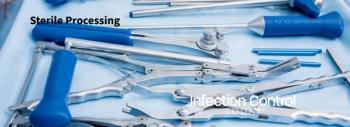
Print-outs are a Vital Component of Documentation in the SPD
By Nancy Chobin, RN, AAS, ACSP, CSPM, CFER
Q: Recently our facility was cited for not signing all the sterilizer print-outs. The surveyor asked us what the readings on the print-out meant but we didn’t know. We were always told just to sign it. Can you help us with this because we want to do the right thing?
A: Physical monitoring is the observation of the charts, gauges, and print-outs from sterilizers and other processing equipment such as washers and automated endoscope reprocesssors. According to the Association for the Advancement of Medical Instrumentation (AAMI), “At the end of each sterilization cycle, the sterilizer operator should review the print-out and verify that the time, temperature, and pressure were correct for the load contents. Then the print-out or chart should be signed or initialed by the sterilizer operator. Any discrepancies should be reported immediately to a supervisor, and the load should not be released. It is important that the competent sterile processing technician be able to read and interpret all charts or print-outs. It is also important to verify that the print-out is legible, indicating that there is adequate ink in the cartridge and that the paper on the roll is positioned correctly before the cycle is run. SPD technicians need to know how to change the paper and/or ink cartridge to ensure legible records.
Most often we think of print-outs associated with steam and low temperature sterilizers; however, mechanical washers, cart washers, automated endoscope reprocessors and tabletop sterilizers have print-outs as well. The purpose of the print-out is to ensure that all the cycle parameters were met before releasing the load. This function is an important part of continuous monitoring of your processes.
If your mechanical washer or cart washer provides a print-out, the operator should sign it after verifying that all cycle parameters were met. Check with your supervisor about whether print-outs must be saved, which might be required by state or local regulations. If your washer has a digital reading, you should verify the cycle parameters are correct before initiating the cycle and at the end of the cycle.
For automated endoscope reprocessors (AERs), at the end of the cycle, the operator should review the print-out from the machine and verify that all cycle parameters were met. If so, the operator should sign the print-out. Some AER print-outs document the serial number of the scope and the name or ID number of the patient. There should be full traceability of the scope to the patient; if the AER does not document this information, it should be documented on a form. If the AER does not automatically provide an alcohol flush, the operator must perform this procedure manually. The alcohol flush should be documented on the print-out to verify that this step was performed.
For sterilizers, after review of the print-out and confirmation that all cycle parameters were met, the print-out should be removed (either after each cycle or at the end of the day) and placed with the log sheet or inside a preprinted envelope, along with any chemical indicators or chemical integrators run in the load. To identify the sterilizer and load, a lot control sticker indicating the load number should be affixed to the CI or print-out. The same information should be maintained in an electronic or digital record-keeping system to facilitate retrieval of the information. For tabletop sterilizers, AAMI recommends that tabletop sterilizers should have print-outs, or the sterilizer should not be used.
To avoid litigation, healthcare providers must comply with established standards of care. Standards of care arise from regulations based on state and federal legislation or statutes. Regardless of the term used, they are the law. The practice guidelines, such as the AAMI, CDC, AORN should always be followed. Practice guidelines and facility policies/procedures are often introduced as standards of care by a prosecuting attorney trying to prove that negligence has occurred. On the other hand, a defense attorney will use the same guidelines and policies/procedures as evidence that standards of care were met.
Documentation refers to the process of providing evidence ("to document something") or to the communicable material used to provide such documentation (Webster’s Dictionary). The importance of documentation is that it provides a) a written record of the incident, b) may be the only source of information for persons subsequently interested in the event and c) provides a source for identifying pertinent reportable data. Documentation is a legal record of the incident and such documentation (records) can be subpoenaed in a court of law including sterilization records. The consequences of an incomplete, inaccurate, or illegible report may cause subsequent personnel to provide inappropriate services.
Since print-outs and all sterilization or high-level disinfection records can be subpoenaed in a court of law, all processing, including print-outs should be saved and all records kept accurate and complete. For quality assurance I recommend that each day the previous day’s sterilization log forms and all equipment print-outs be reviewed to ensure that all cycles were documented, that all print-outs are legible and were signed, and that all cycle parameters were correct. Any errors should be brought to the attention of the department supervisor immediately so that corrective action can be taken (e.g., the recall of sterilized items). It is much easier to correct an error within 24 hours than after a problem occurs.
In summary, it is important that as a sterile processing technician, you have been trained with competencies verified initially and annually, on the interpretation of all equipment print-outs. You should never sign something you do not know or understand. Request that an in-service be provided to you if you have any questions about interpretation of print-outs. Make sure the printer is operational and the print-out is legible. The patient is depending on you to do the right thing. This includes knowing how to read print-outs so a cycle failure can be corrected and the device(s) reprocessed before they reach the patient. Remember, patient safety is not optional.
Nancy Chobin, RN, AAS, ACSP, CSPM, CFER, is a sterile processing consultant and educator.
References:
ANSI/AAMI: ST79:2017. Comprehensive Guide to Steam Sterilization and Sterility Assurance in Healthcare Facilities.
Basics of Sterile Processing 6th Edition. Sterile Processing University, LLC. Lebanon, N.J.
Newsletter
Stay prepared and protected with Infection Control Today's newsletter, delivering essential updates, best practices, and expert insights for infection preventionists.





